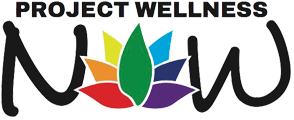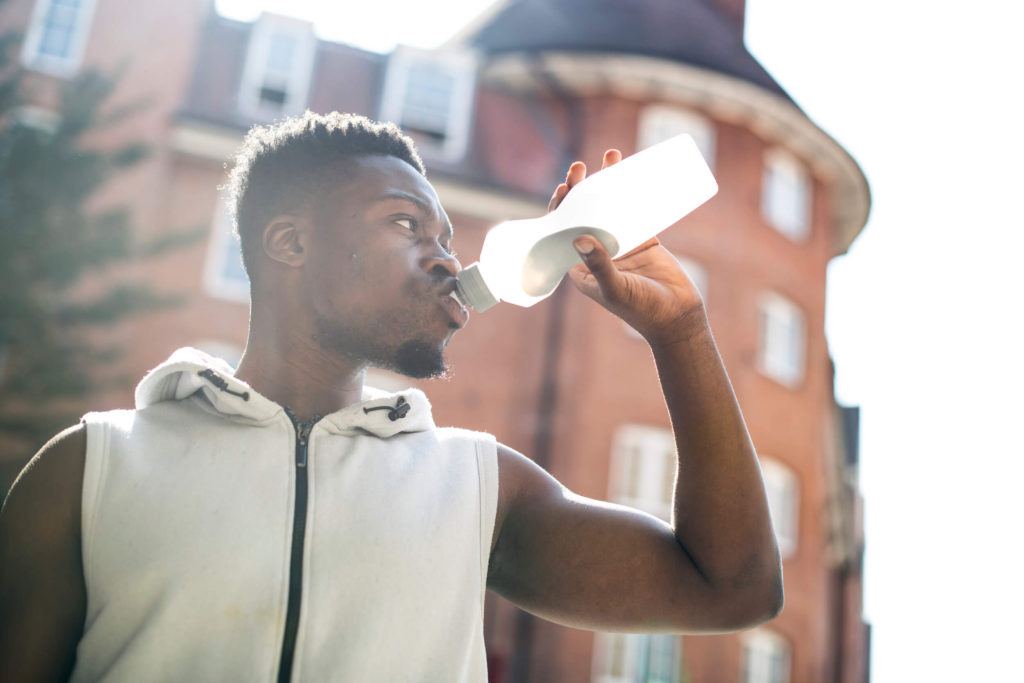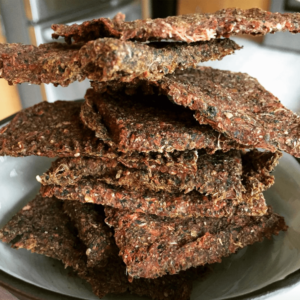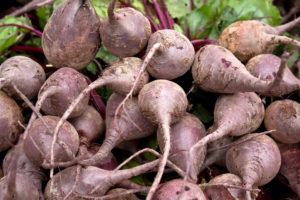Exercise is an essential component of a healthy lifestyle. A healthy body is one that can move freely, and sit comfortably. And because the physical body and the mind are deeply interconnected, a healthy body tends to come hand-in-hand with mental-emotional health.
Happily, there are many different forms of exercise, to suit the needs and preferences of a multitude of different human beings. Some types of exercise — say taking walks along a forest path, or a gentle tai-chi or Feldenkrais practice — are quite mellow. And other forms of exercise — like long-distance running, or Bikram yoga, or heated stationary cycling — can be quite intense.
If your chosen form of exercise has you sweating a lot, this can be wonderful, in terms of its cleansing effects. But it also means that you need to know how to stay properly hydrated, which means replenishing not only the water that is lost via sweating but also the essential electrolytes, e.g. sodium, potassium, magnesium, calcium, and chloride.
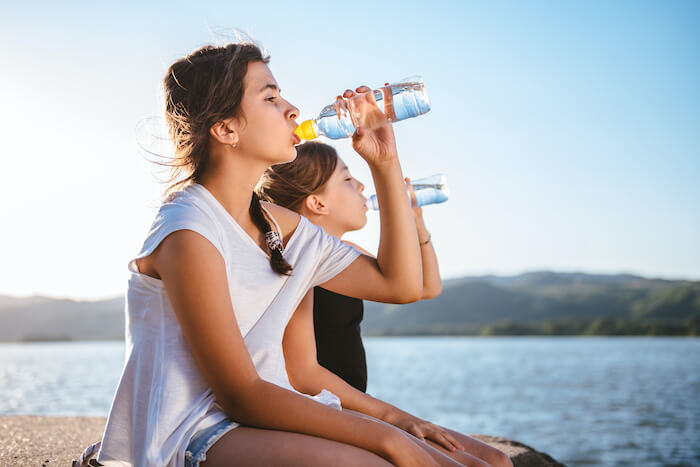
WHY ELECTROLYTES ARE IMPORTANT
At a molecular level, the average human adult body is around 60% water. So losing some water via sweating – even quite a bit of it – in and of itself is not a problem, assuming you drink enough water to replace it.
The more important issue is keeping electrolyte levels fairly stable. Electrolytes are chemicals in the body that form electrically charged particles (called “ions”) within body fluids. These ions carry the electrical energy necessary for a huge variety of bodily functions. They are required, for instance, in the transmission of nerve impulses in muscle contractions — so electrolytes help to prevent muscle cramps. And the heart’s conduction system – i.e its pattern of contraction and relaxation – depends upon cardiac nerve impulses, which require sodium, potassium, magnesium, and calcium (i.e. electrolytes) in order to function properly.
The bottom line is: electrolytes are super-important! So we should do our best to prevent electrolyte imbalance and dehydration. The good news is that there are relatively simple ways of doing this, even when we choose to indulge in our favorite mega-sweating activity – be it Bikram yoga, heated cycling or something else. Here’s how …
1. Drink Lots Of High-Quality Water
This one’s pretty obvious, right? If you’re sweating a lot, then drinking lots of water is important. And the higher the quality of the water, the better. So instead of drinking just plain ‘ole tap water, go for water that has been filtered via a Brita pitcher or other similar system. Even better, purchase three or five-gallon jugs of high mountain spring water, to have “on tap” in your home.
2. Supplement The Water With Added Electrolytes
But remember: when we sweat, it’s not just water that’s flowing in streams and rivers down our necks and arms and legs, to be mopped up by our yoga-room towels. It’s electrolyte-infused water that we’re losing. And so we need to replace not just the water but also the electrolytes. No problem: simply add a package of your favorite electrolyte hydration powder to your bottle of water. Drink this before, during and after your class.
But be sure to check the label: a good electrolyte hydration powder will contain a variety of electrolytes and minerals, including calcium, phosphorus, magnesium, potassium, selenium, zinc, sodium, chloride along with vitamin C. These are all the major electrolytes your body needs, to replenish what’s lost via sweating. The electrolytes and minerals are combined in the proportions that your body can most efficiently utilize. And last but not least: definitely choose a sugar-free variety — since both refined sugar and artificial sweeteners are nutritionally empty and end up sapping your energy, rather than replenishing it.
3. An Added Treat: Use Young Coconut Water As Your Base
Dissolving electrolyte replacement powder into high-quality water is a fantastic strategy for remaining properly hydrated during a Bikram yoga class, a vigorous run or bike ride, or any other time you’re losing electrolytes via sweating a lot.
What could be even better? The answer is: young coconut water as your base. Young coconut water itself has a high electrolyte content and is nearly identical to human blood plasma – making it extremely easy for the human body to quickly absorb. As Dr. Axe tells us:
Coconut water has been consumed for centuries in tropical countries and is believed to treat a variety of health-related ailments. In Sanskrit, coconuts are called “kalpa vriksha” which means “tree which gives all that is necessary for living.”
In certain emergency situations, coconut water has been used for IV hydration due to its high electrolyte content and the fact that it is sterile if used directly from the inside of the coconut. People all over the world enjoy coconut water for its multiple benefits and sweet taste.
So …. Instead of filtered or spring water as your base, consider a container of organic coconut water (Harmless Harvest is an excellent choice) – into which you dissolve your electrolyte replacement powder – for a truly outstanding and delicious hydration drink.
To your health and happiness!
YOU MAY ALSO LIKE:
ENCHANTED ECO-THERAPY: THE PHENOMENA OF FOREST BATHING
“Between every two pine trees, there is a door leading to a new way of life.”John MuirTweet Many of us enjoy…
SWEAT DOESN’T DEFINE A GREAT WORKOUT
By Kevin Jones Sweating is almost inevitable when working out. You might be one of those who soak their clothes with…
RAW VEGGIE JUICE PULP CRACKERS
Have you ever wondered what to do with the leftover pulp from your juice? Did you hate wasting it? We’ve got…
HOW TO SLEEP BETTER AT NIGHT AND WHY IT MATTERS
Perhaps you’ve thought of rest and relaxation as a luxury or getting 8 hours of sleep for the lazy, but science…
FULVIC ACID FACTS…OR FICTION
Fulvic acid. The term may sound familiar as if the description is hiding in the back of your mind somewhere but…
TOP 7 HEALTH BENEFITS OF BEETS
If you only knew how beneficial beets are to your health, you would not hesitate to include them in your diet….
